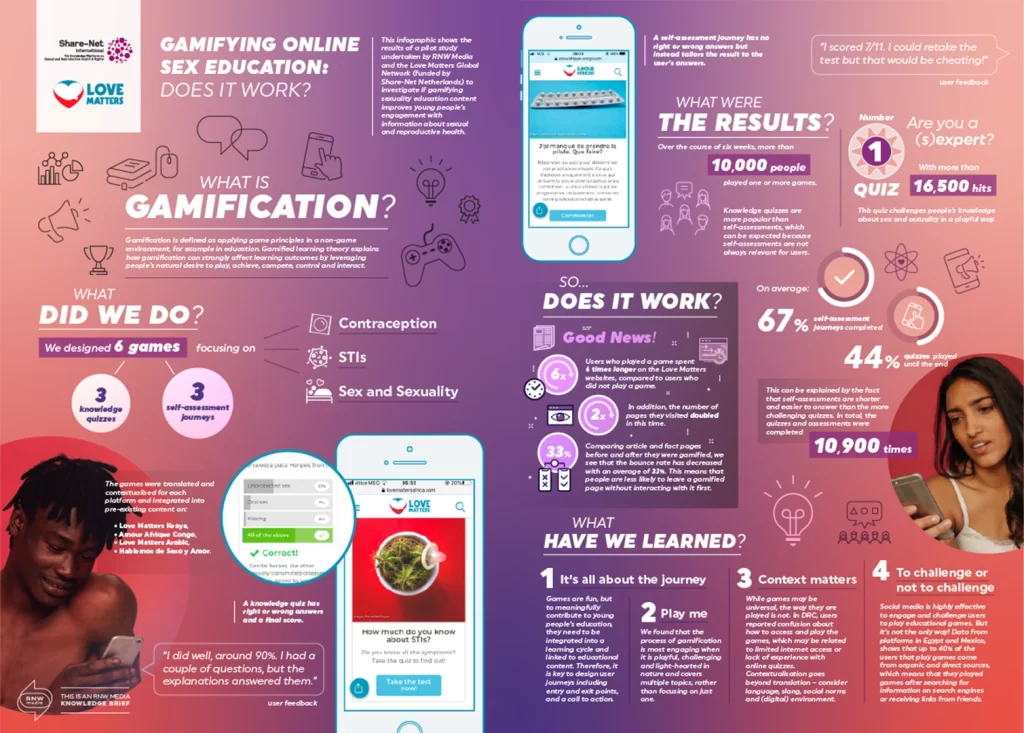Project: Gamification for Sex Education
PROJECT BACKGROUND
The goal of this project was to identify the potential of using gamification to drive behaviour change. This was measured by observing the engagement with content related to Sexual and Reproductive Health and Rights (SRHR) over a three-month period in four countries.
Gamification is the application of game principles in a non-game environment. The essence of gamification is to encourage behaviour change and deepen engagement by combining two areas of knowledge: game design and behavioural psychology. By incorporating game mechanics and experience design with key concepts of behavioural psychology, we can create an appealing digital experience that motivates people to achieve a goal.
Users can play, explore, experiment as well as learn with game-based content. When implemented well, gamification leads to tangible benefits, including a better definition of the user’s pain points. Consequently, it can form the basis of long-term competitive advantage.
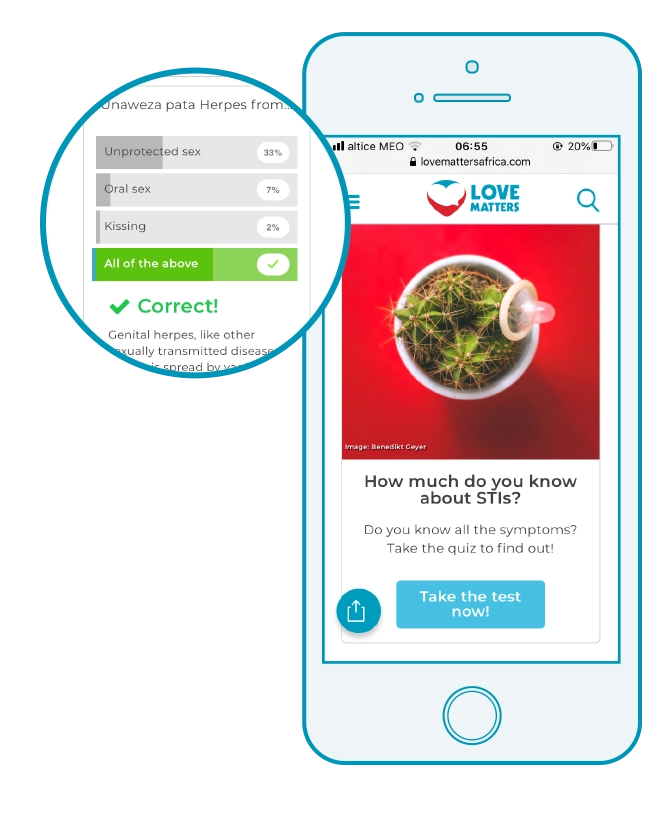
The Problem
Based on previous research, content related to sexual pleasure receives 2,5x more engagement than content related to risk-reduction behaviour. With this in mind, how can we nudge young people to consume risk-reduction content in a fun and interactive way?

The Goal
The goal of this project was to investigate if gamifying online sex education content increases young people’s engagement with SRHR information.
My Role & Responsibilities
The project took place at RNW Media (Love Matters Network) where I worked as a Digital Engagement Specialist.
My responsibilities in this project included:
- Overall research on gamification principles
- Design of a Measurement Framework
- Data analysis
- Setup of tools (including GTM implementation)
- Coaching local teams on best practices for distributing content (Engagement Plan)
THE PROCESS
This project was carried out under the Design Thinking principles. With the problem well-defined, we started by brainstorming ways to nudge young people to consume more SRHR content on RNW Media’s websites.
In this respect, research on Self-Determination Theory shows that there are three main drivers when it comes to behaviour change: Autonomy, Competence and Connection. These elements are often present in successful gamified products, and therefore, we started exploring the topic further in connection with our problem.
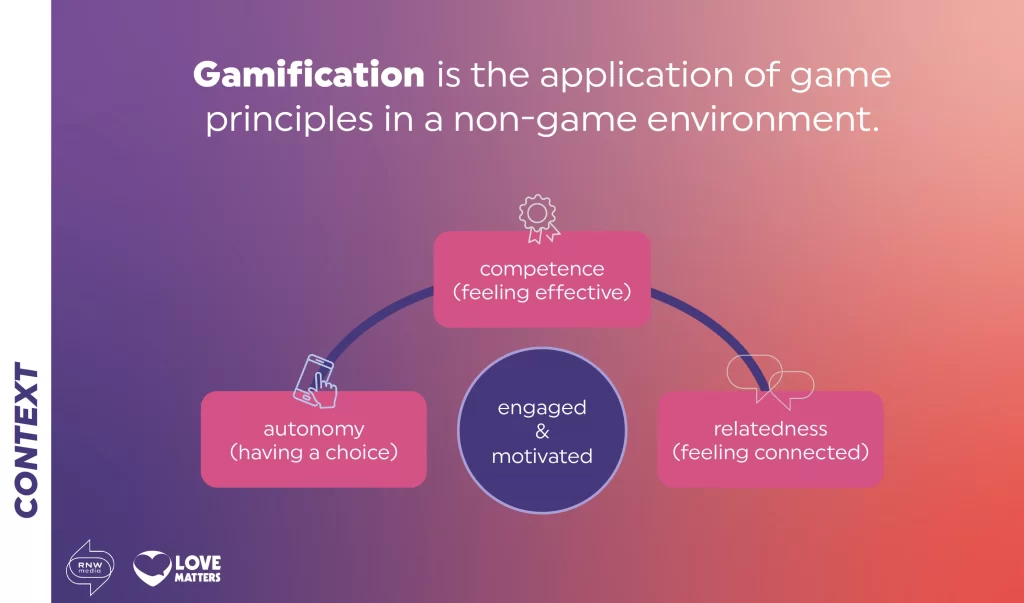
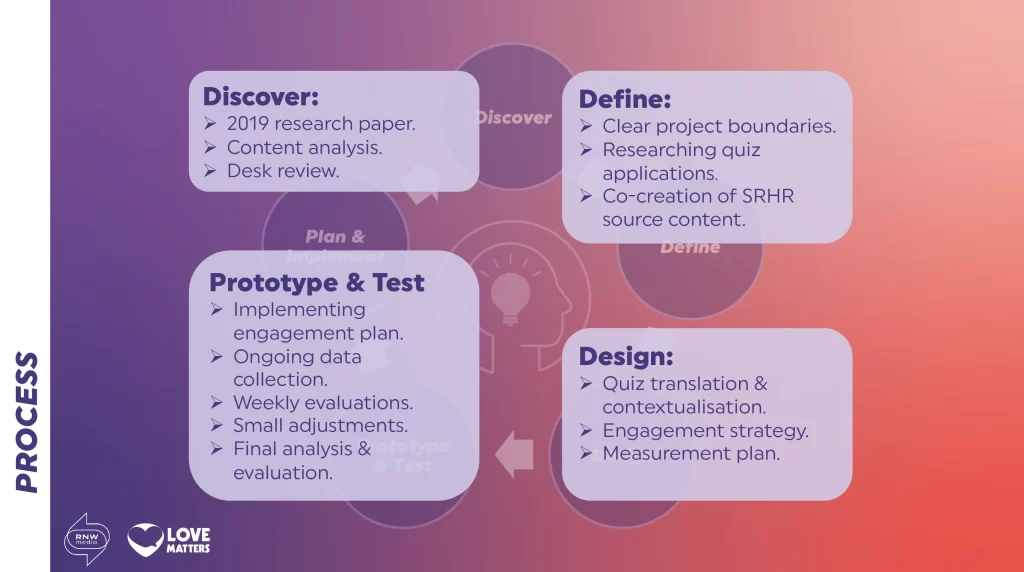
Once the pillars of gamification were understood, creative thinking was fundamental to establishing a plan of action. There is a wide range of tools available online which can be embedded into web pages to support gamification projects. For this project, we decided to implement quizzes that would test the audience’s knowledge on certain topics so that they could receive the title of a SEX EXPERT.
The tool we used is called Riddle. It was chosen due to its ease of implementation by local teams. The Content Specialist, together with the SRHR Specialist, created a set of questions which was implemented in six quizzes across four countries.
Once the tool was decided, I designed a Measurement Framework to capture the results of this pilot. All the integration with Google Tag Manager has been implemented by myself. I also set up a Facebook Pixel to be able to run ads for the audiences who played the quizzes in the future. Prior to the campaign, I run a baseline analysis to identify general engagement stats and well as suggest the best pages for the implementation of the quizzes. During the course of the project, I run weekly evaluations, summarising general insights and proposing action points to increase engagement on the quizzes. In addition to the quantitative analysis, another member of the team performed qualitative analysis by summarising learnings from interviews with content editors and comments retrieved from the website and social media posts related to the quizzes.
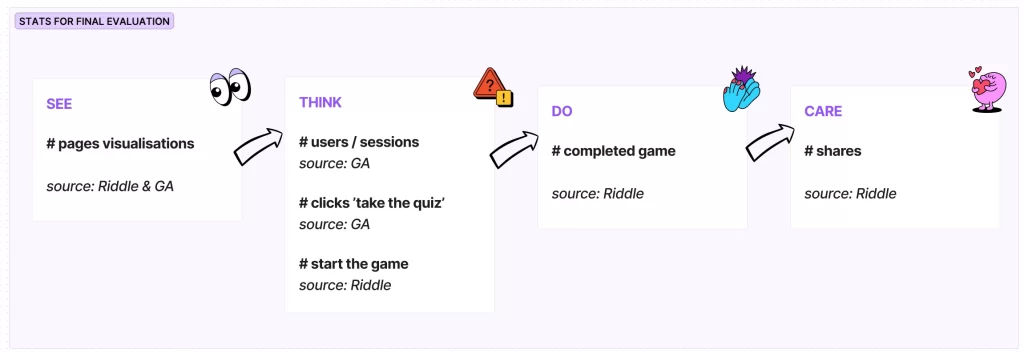
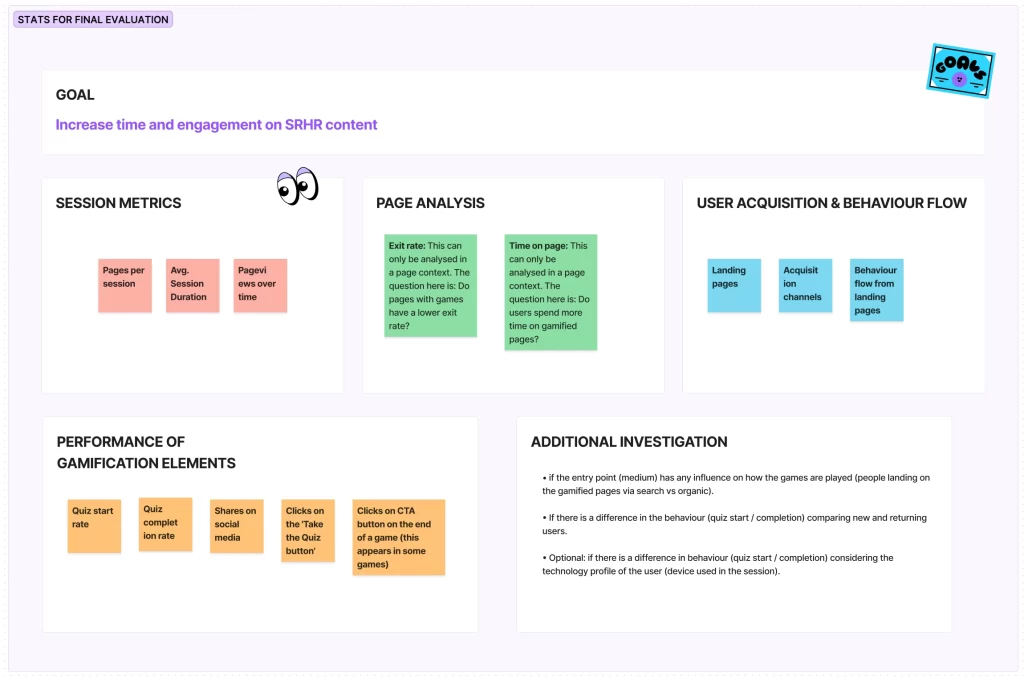
THE RESULTS & THE FUTURE
In summary, this pilot study concluded that:
- Users who accessed gamified content spent 6 times longer on the Love Matters websites compared to users who did not access gamified content;
- In addition, the number of pages they visited doubled during this timeframe;
- Gamified content can meaningfully contribute to young people’s education when integrated into a learning cycle and linked to educational content.
These results were presented to the donor of the project (ShareNet). Subsequently, a webinar was organised to present the potential of gamification to other NGOs.
Once the funding for the project is extended, there is the possibility to:
- Scaling up quiz formats
- Piloting new gamification formats
- Investigating knowledge retention in audiences who played the games
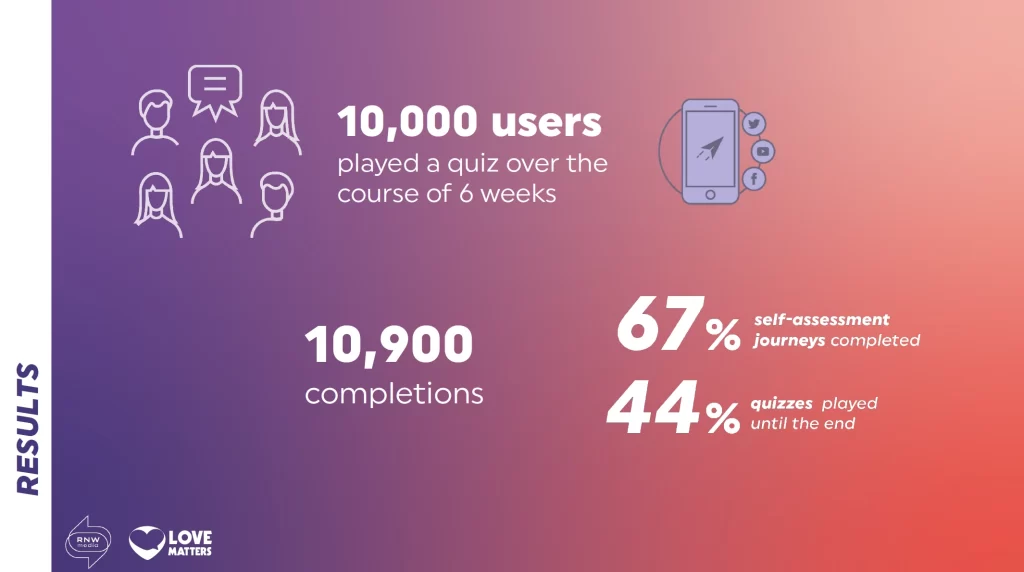
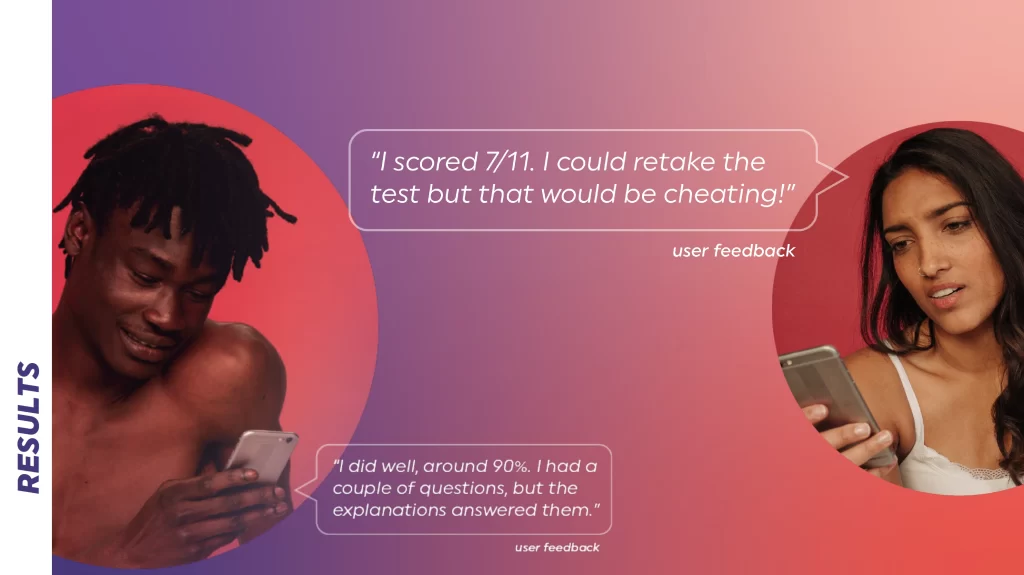
WHAT I LEARNED
Implementing sophisticated gamification techniques can require a substantial investment by an organisation. In an ideal situation, the project would require a team of professionals with different backgrounds, such as UX designers, social psychologists and possible developers.
However, it is not only possible but advisable to start experimenting with smaller pilot projects like this one. This was a fun project and I enjoyed digging deeper into the psychological aspects of nudging behaviour change through gaming elements.
